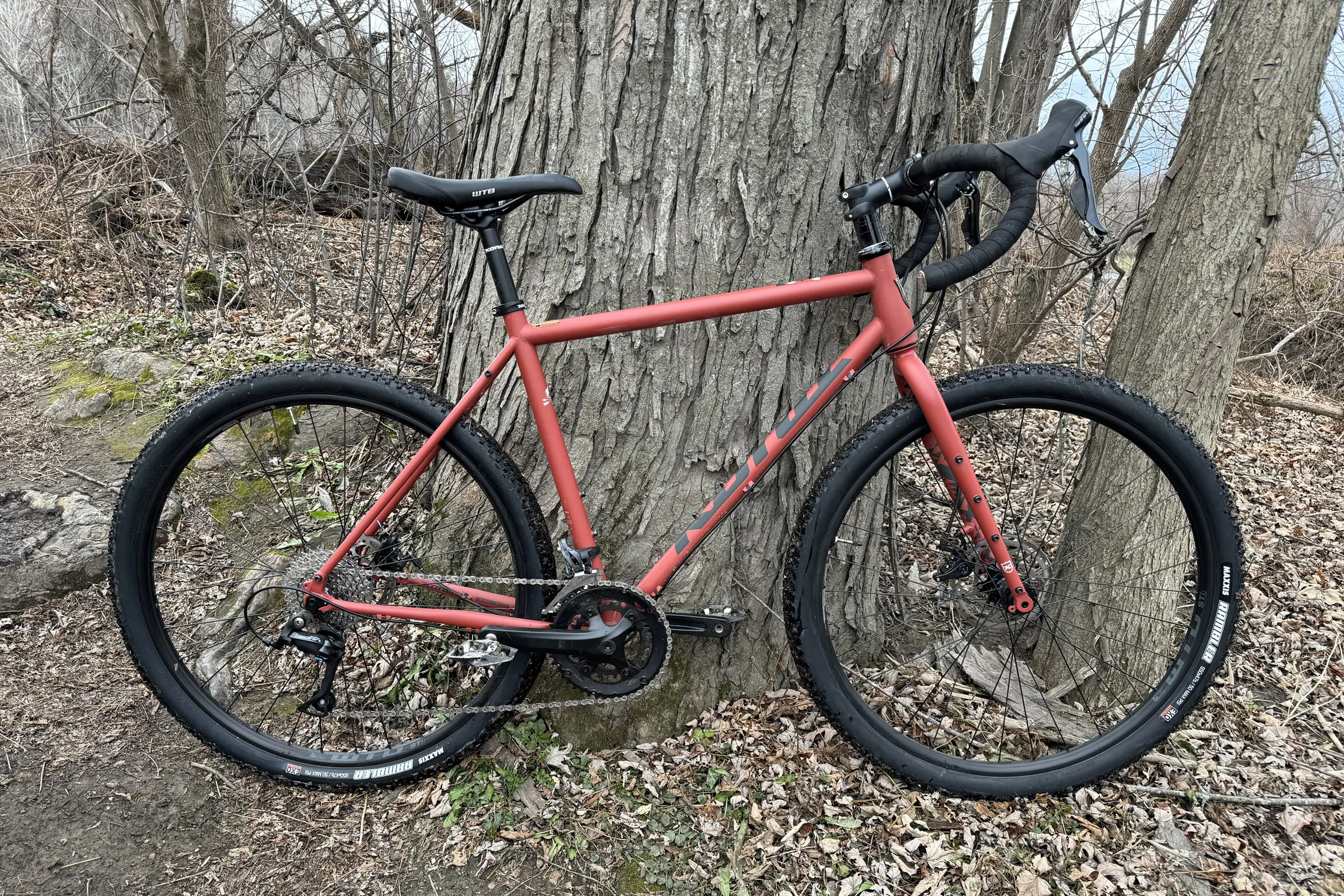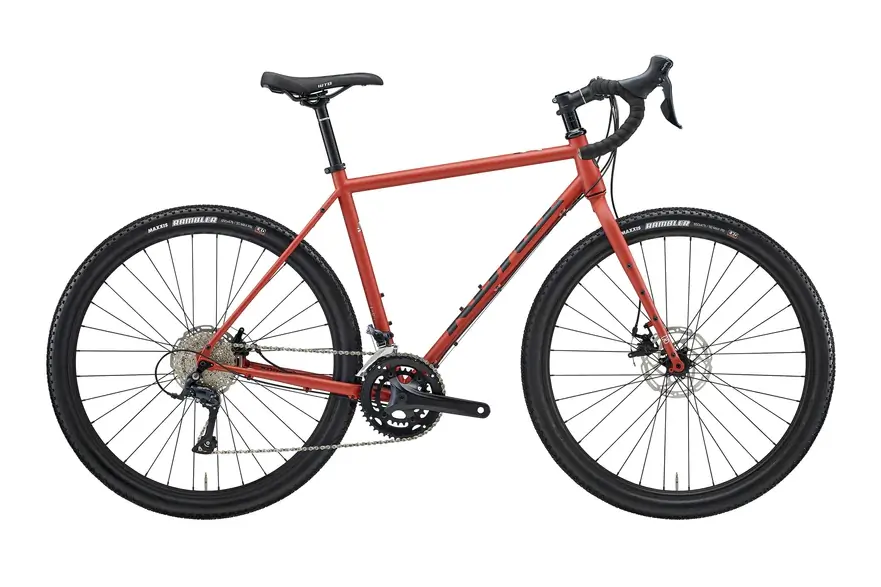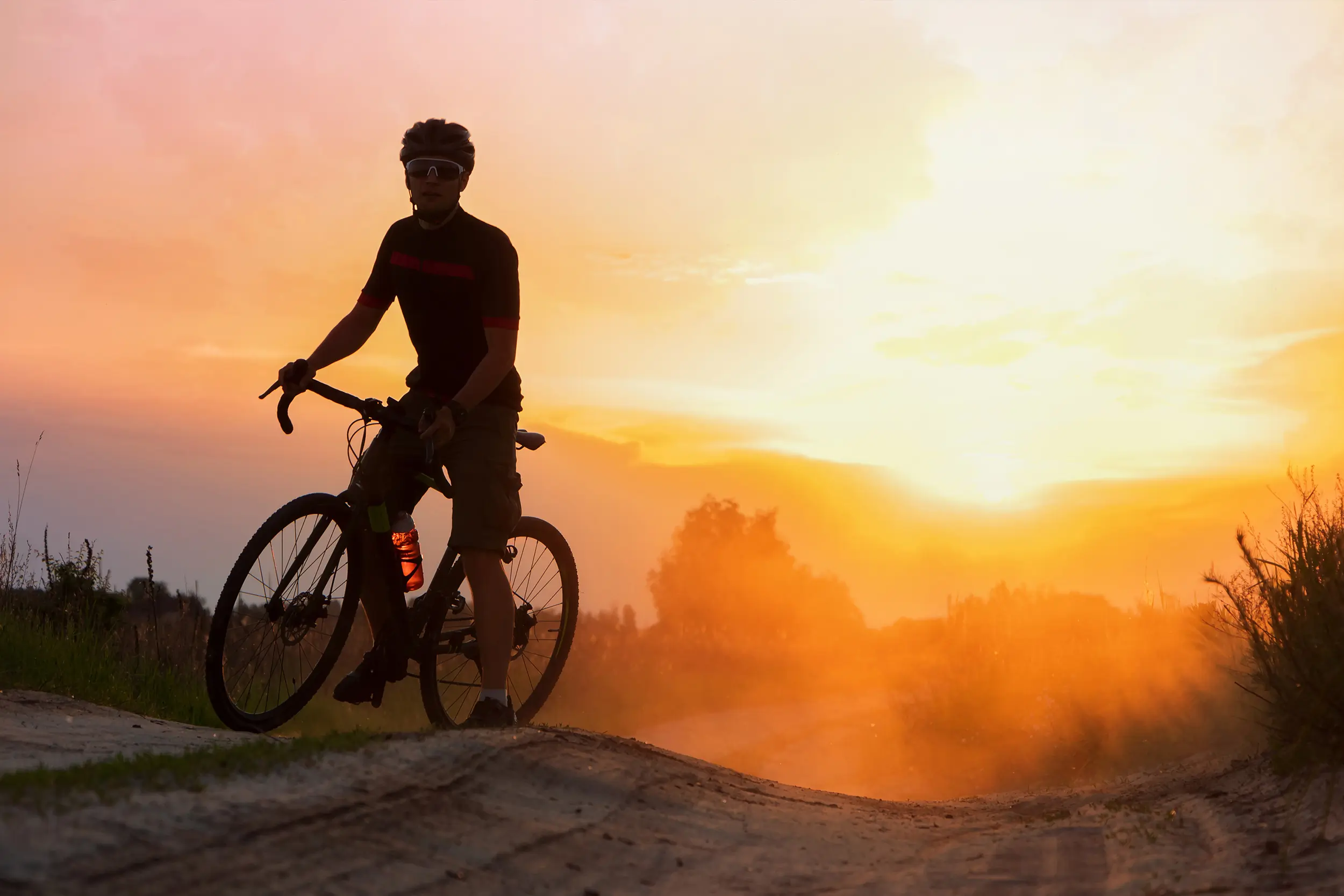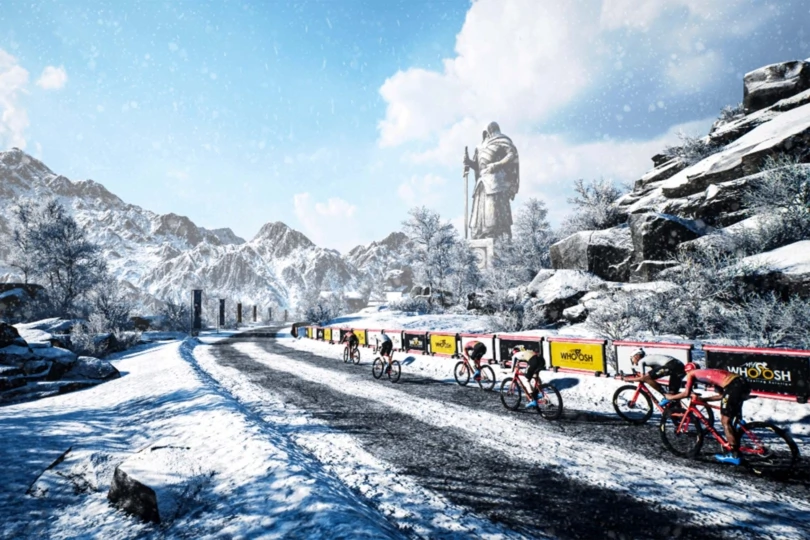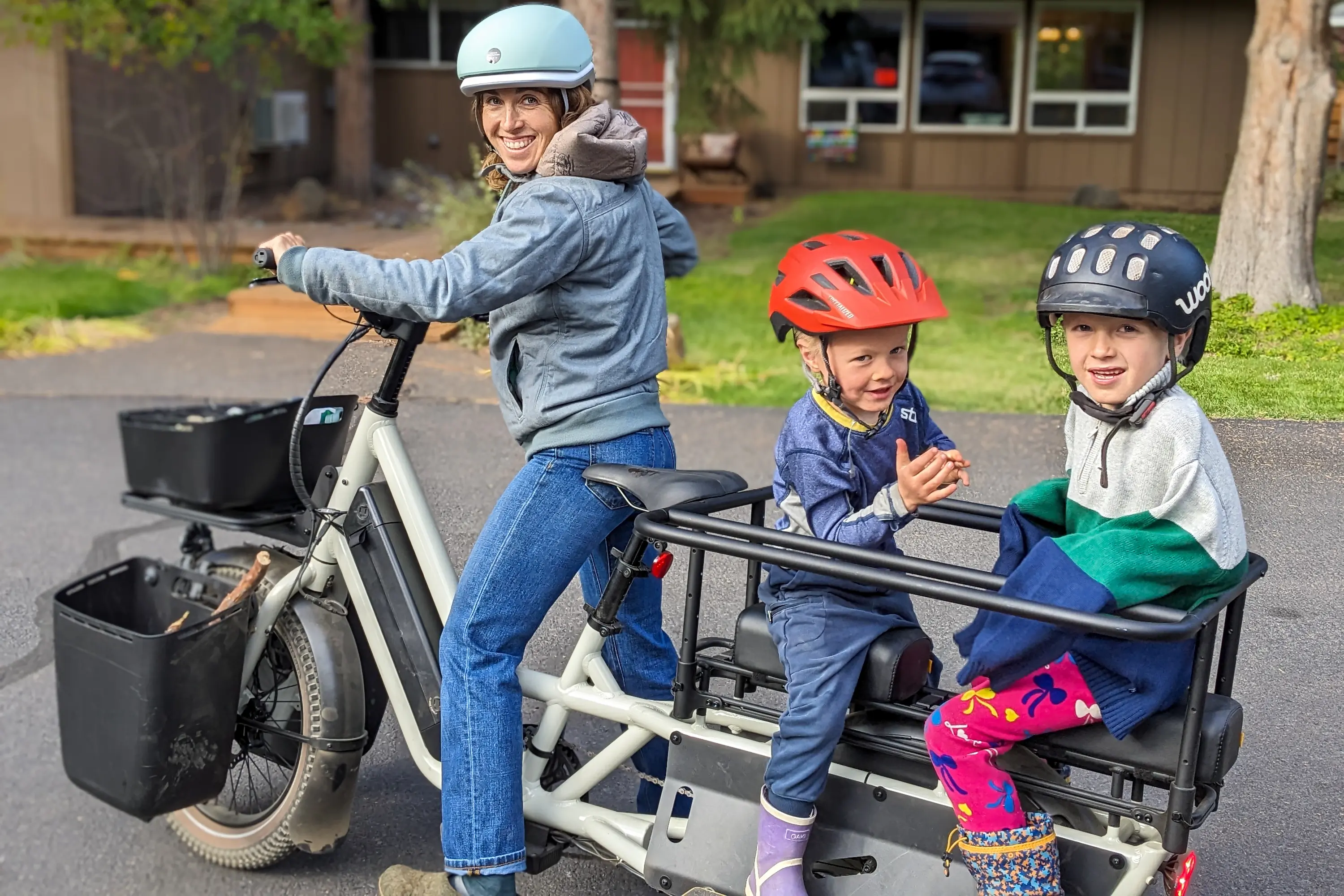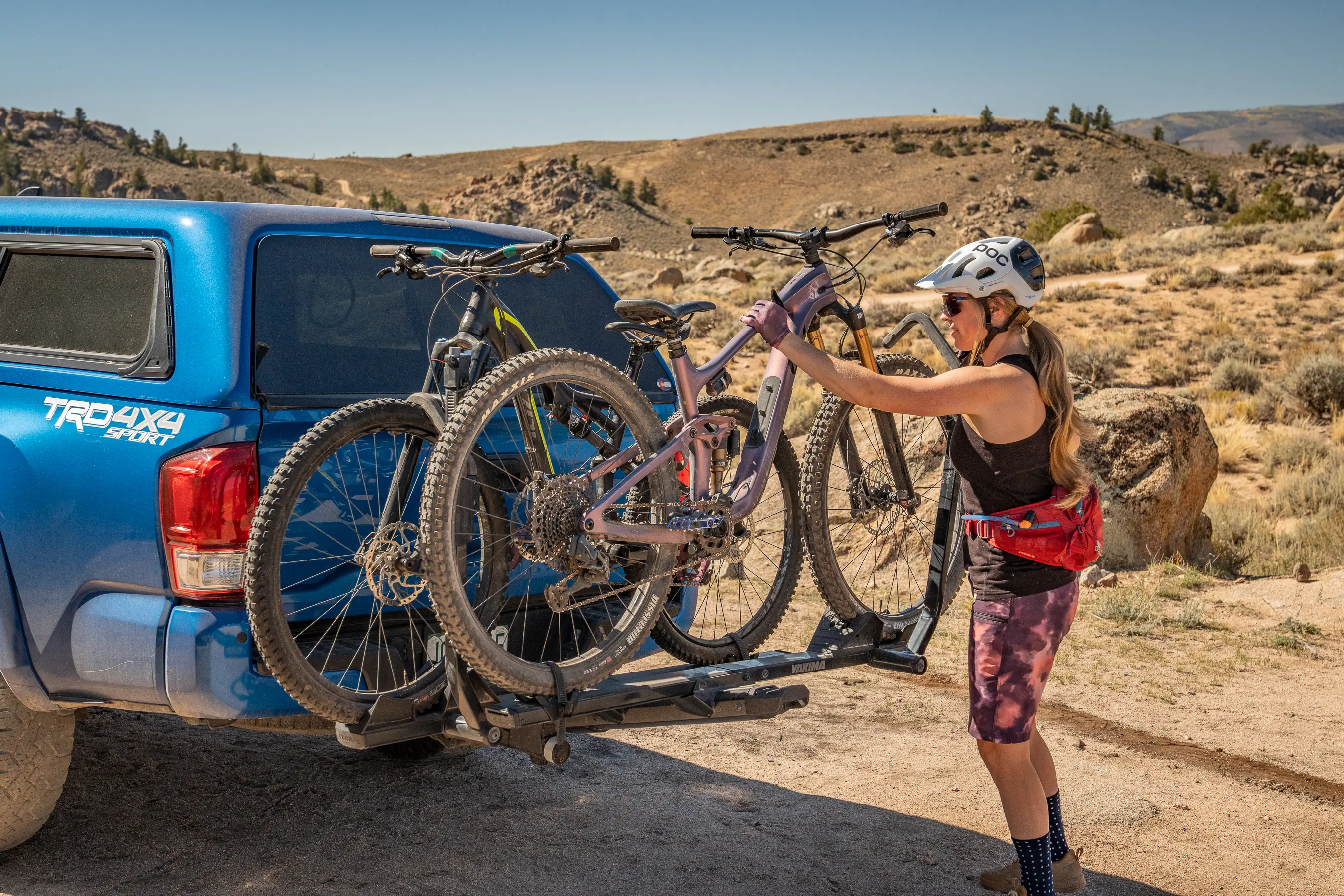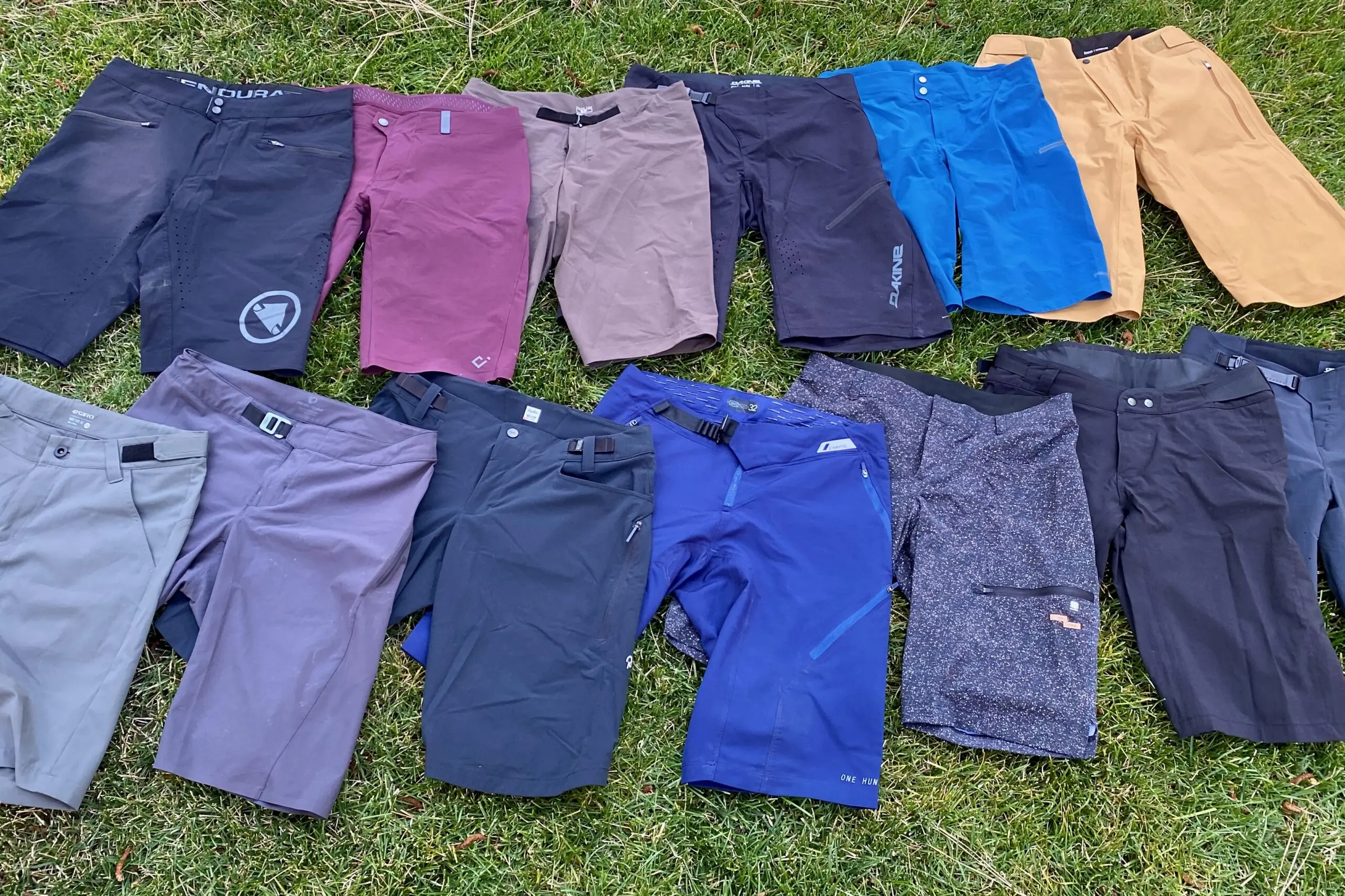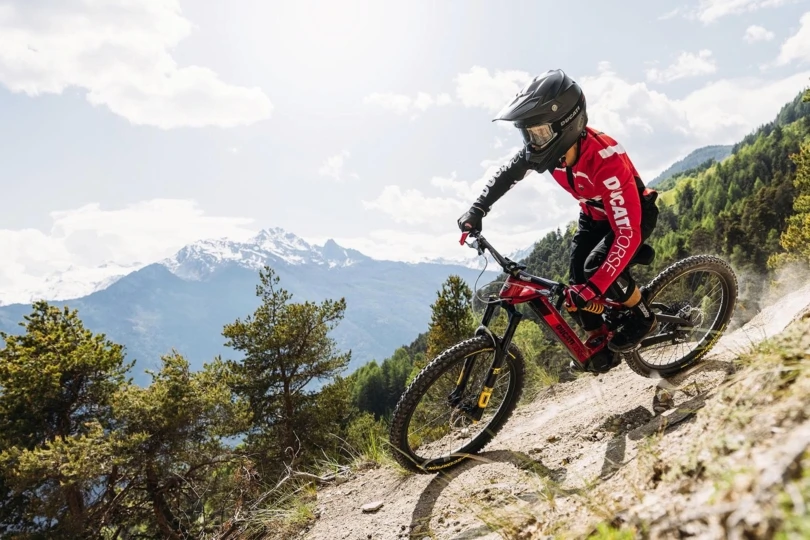The Kona Rove quickly became the trustworthy companion I could count on. It’s also one of the most affordable yet capable gravel bikes you can buy. I tested the $1,599 Kona Rove for a month of gravel, trail, and urban riding in hilly Vermont.
In short: Whether you’re dabbling in gravel biking, looking for a reasonably priced commuter to get you back and forth to work, or seeking an adventure steed that will leave you with the cash to pay for accessories, food, and camping gear or lodging, Kona’s Rove is a great choice.
- Frame material: Double-butted cromoly
- Fork material: Cromoly
- Drivetrain: Shimano Sora 2x 9 speed
- Brakes: Tektro MDC550 Mechanical with Tektro TR160mm centerlock rotors
- Wheels: WTB ST i23 TCS 2.0 rims, Shimano or KT 100x12mm hubs, 14g stainless steel spokes
Pros
- Great value
- Comfortable and stable
- Field-serviceable mechanical disc brakes
- Plentiful frame and fork mounting points for bags
- Minor upgrades can make huge differences
Cons
- Heavy
Kona Rove Gravel Bike: The Good
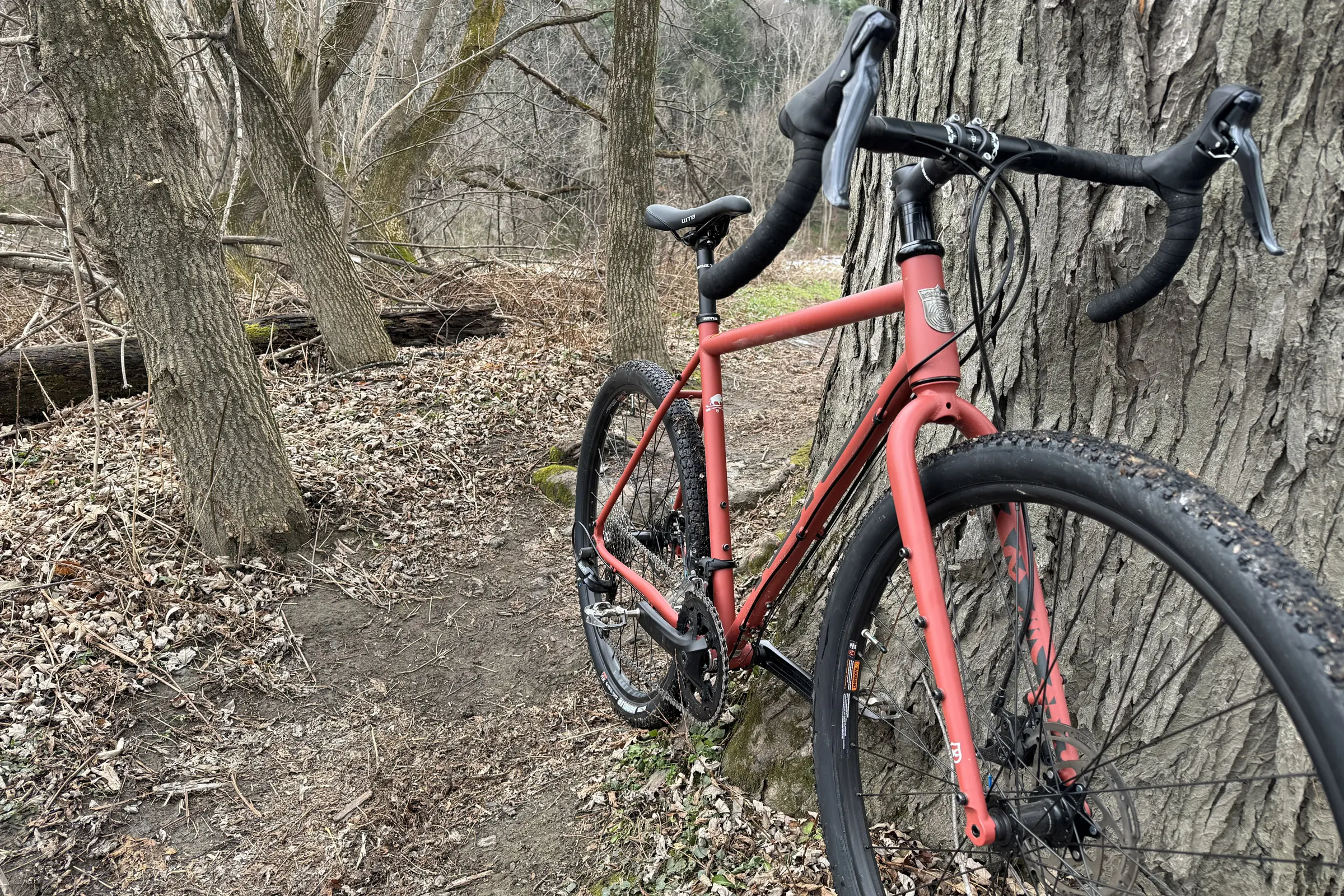
Steel Is Real
Made from double-butted chromoly steel, the Kona Rove frame was plush and comfortable even on harsh, badly maintained roads. The steel frame dispersed road shock well, while the bike’s relaxed geometry put me in an efficient but not aggressive pedaling position. I didn’t feel beaten up when I finished a ride on the Rove, whether I was out for long miles or hammering through a quick and dirty lunch ride.
While steel isn’t the top choice for racers since steel bikes are typically heavier than carbon or aluminum, it’s more affordable, less fragile, and longer lasting.
Relaxed Geometry and Rider Position
I felt settled into the cockpit on the Kona Rove and never felt like I was awkwardly or precariously perched. The position gave me a lot of stability on the bike, whether cranking through the flats or soaring down steep hills. On some other price point bikes I’ve tested, descents have felt wobbly, but the Rove was rock solid at high speeds.
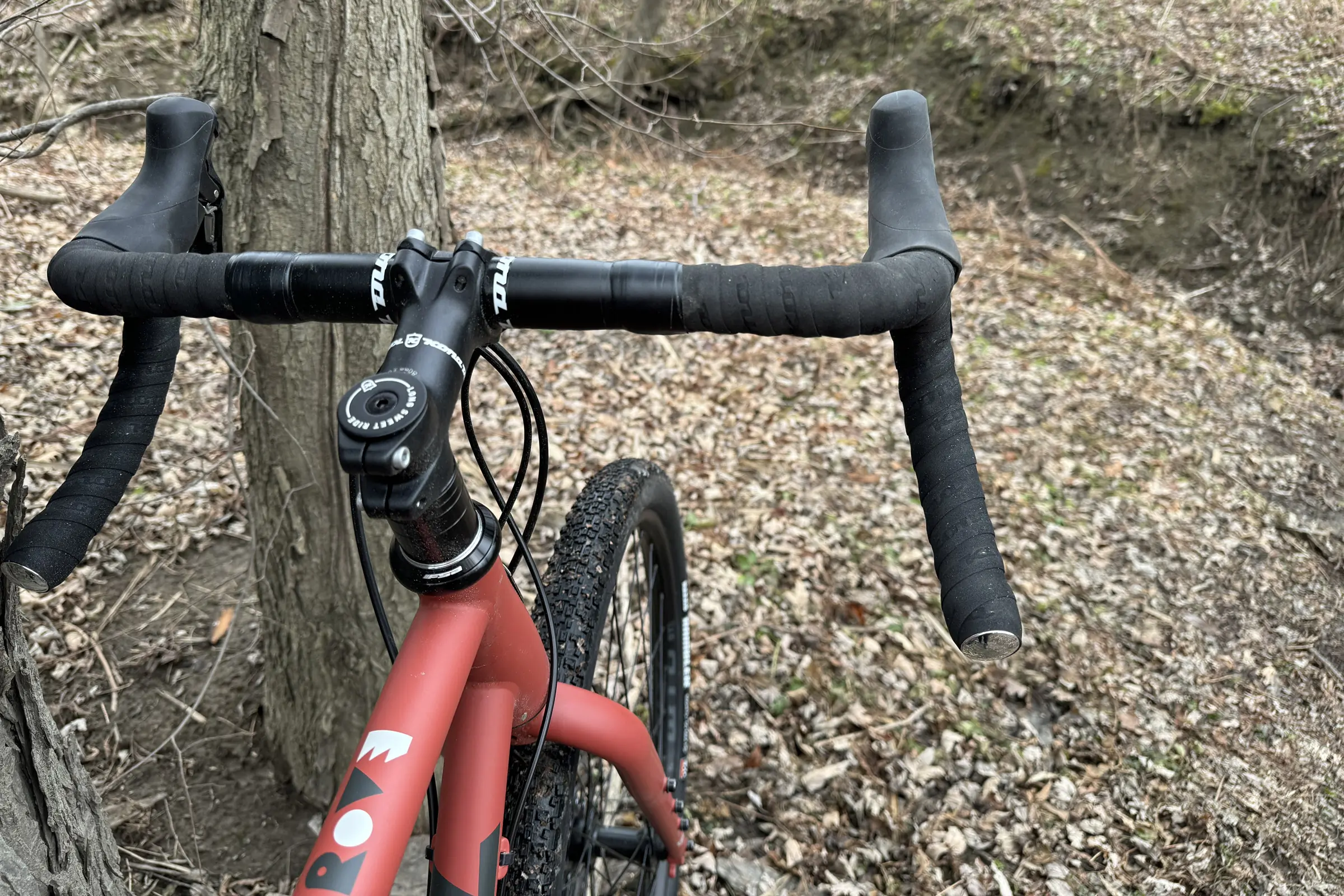



The bike’s extra-long steerer tube was partially responsible for the more relaxed and upright riding position. If you want a more aggressive stance, there are plenty of spacers above and below the stem to attain the perfect handlebar height.
Componentry on the Kona Rove
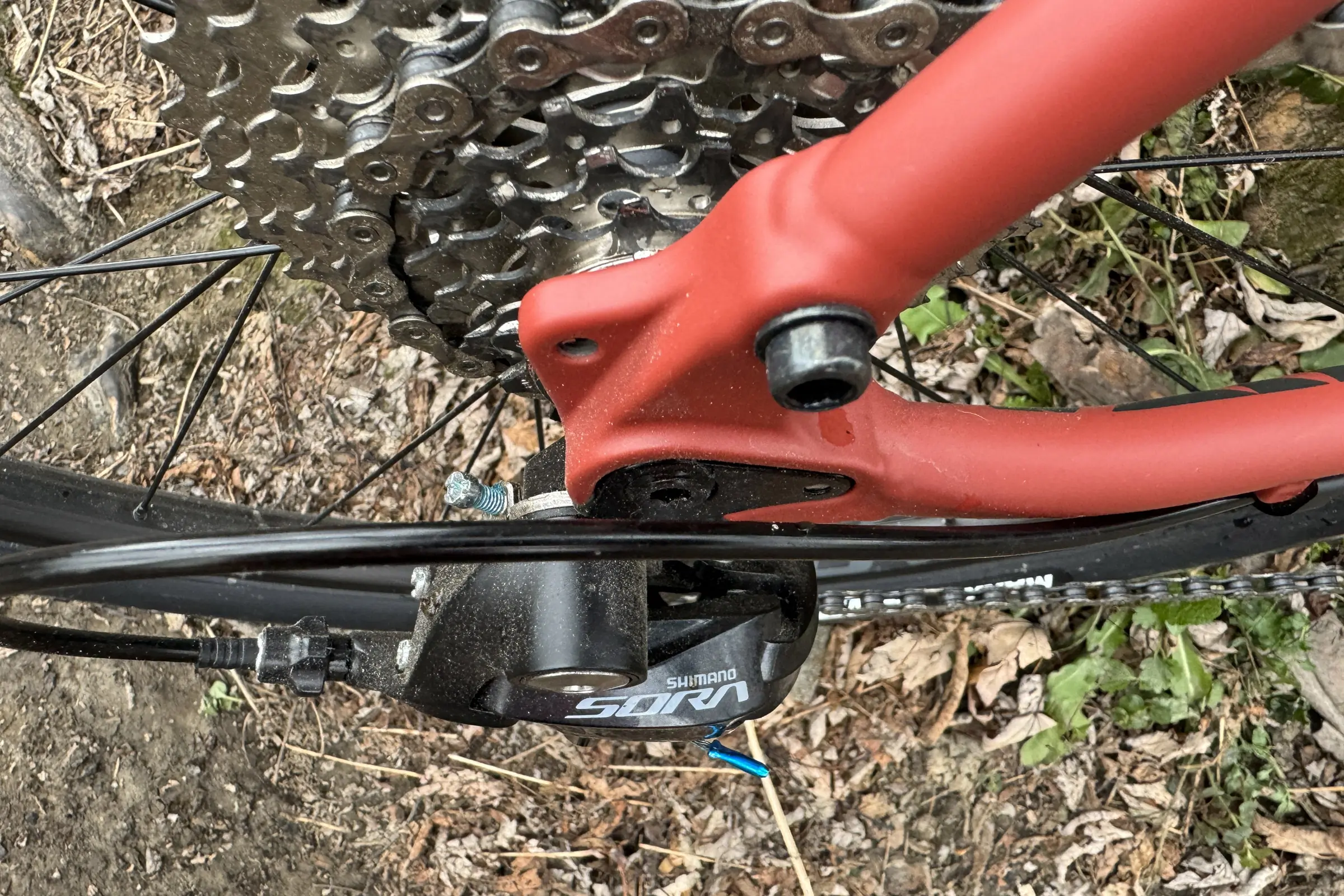



The drivetrain can make or break a bike. Though Kona specs an affordable Shimano Sora road drivetrain on the Rove, which is not gravel-specific, it was reliable, shifted smoothly, and rode quietly for the month I tested this bike. It was a workhorse, and I expect it to remain well into the future.
The Rove is heavier than many gravel bikes, at 26 pounds, 14 ounces on our scales. But it didn’t feel sluggish. The 34/50t dual front chainring with a nine-speed corset gave me plenty of gears for steep and hilly terrain. The smaller chainring allowed me to crank up dirt “gaps,” Vermont’s version of mountain passes, without having to stand and grind. And the 2x setup will be ideal for loaded touring.
The Rove comes with Tektro mechanical disc brakes. They’re affordable and also easier to maintain in the field. Hydraulic brakes require special tools and fluids to repair. The Tektro mechanical disc brakes can be fixed with common, easily packed parts and tools.
Other Goodies
A thoughtful sticker on the frame displays the necessary repair parts and dimensions. It lists the seat post clamp diameter, the derailleur part number and fork, headset, bottom bracket, axle, and front derailleur specifications.
The bike uses a 12x100mm front and 12x142mm rear thru-axles, which added stiffness to the wheel/fork and frame interfaces. These helped the Kona Rove feel predictable in corners and solid and stable overall.
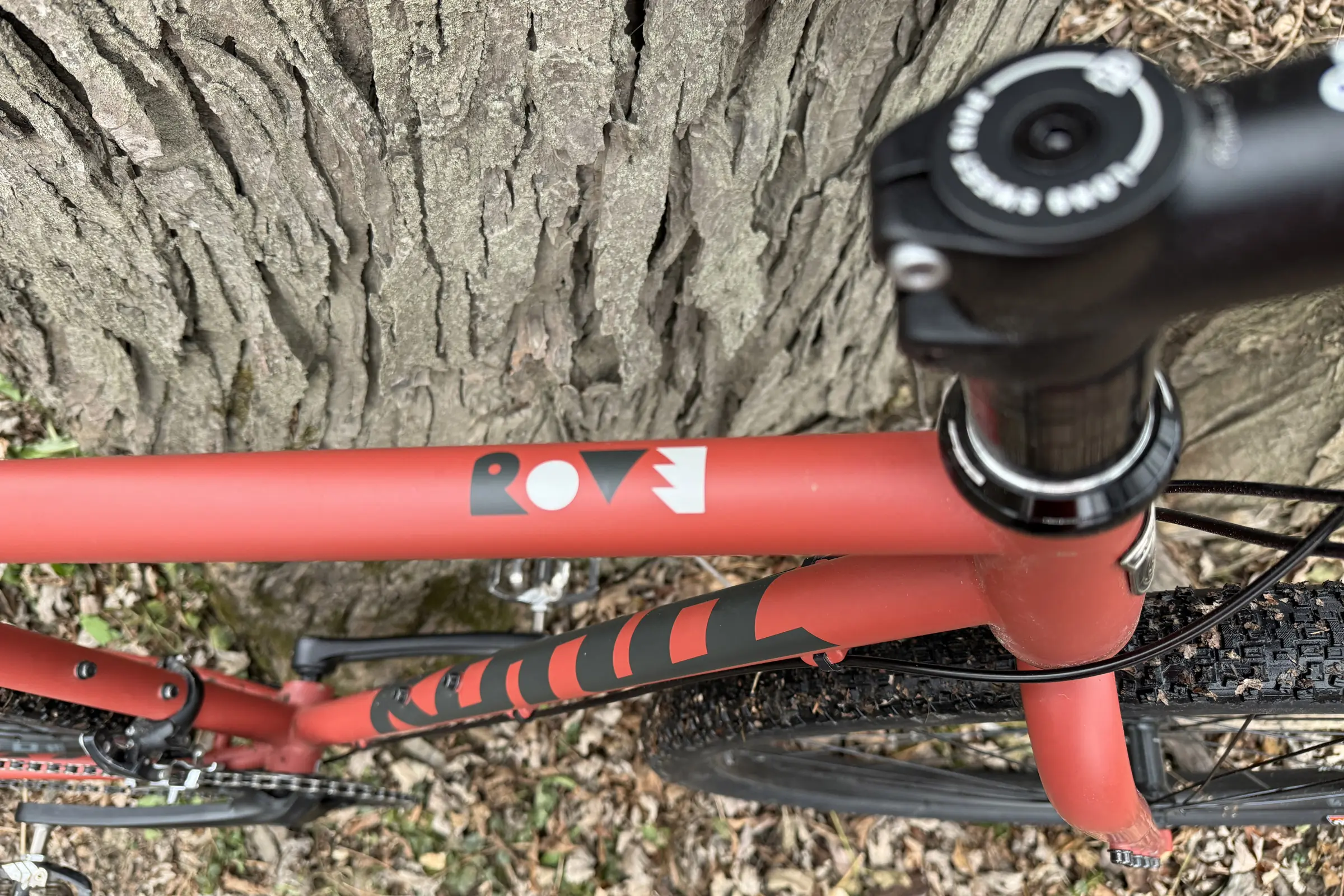



Kona equipped the Rove with loads of mounts, a major bonus for setting this bike up for touring. The four fork mounts per side can hold bags or bottles. The bike has room for a full-frame bag or multiple water bottles in the main triangle. It also has mounts for a rear rack or seat bag. Kona put plenty of space and attachment points on the Rove for day-tripping, commuting, or overnight adventures.
Finally, the Kona Rove comes in a broad size range, from 48 to 58. It will fit most riders from 4’10” to 6’5”.
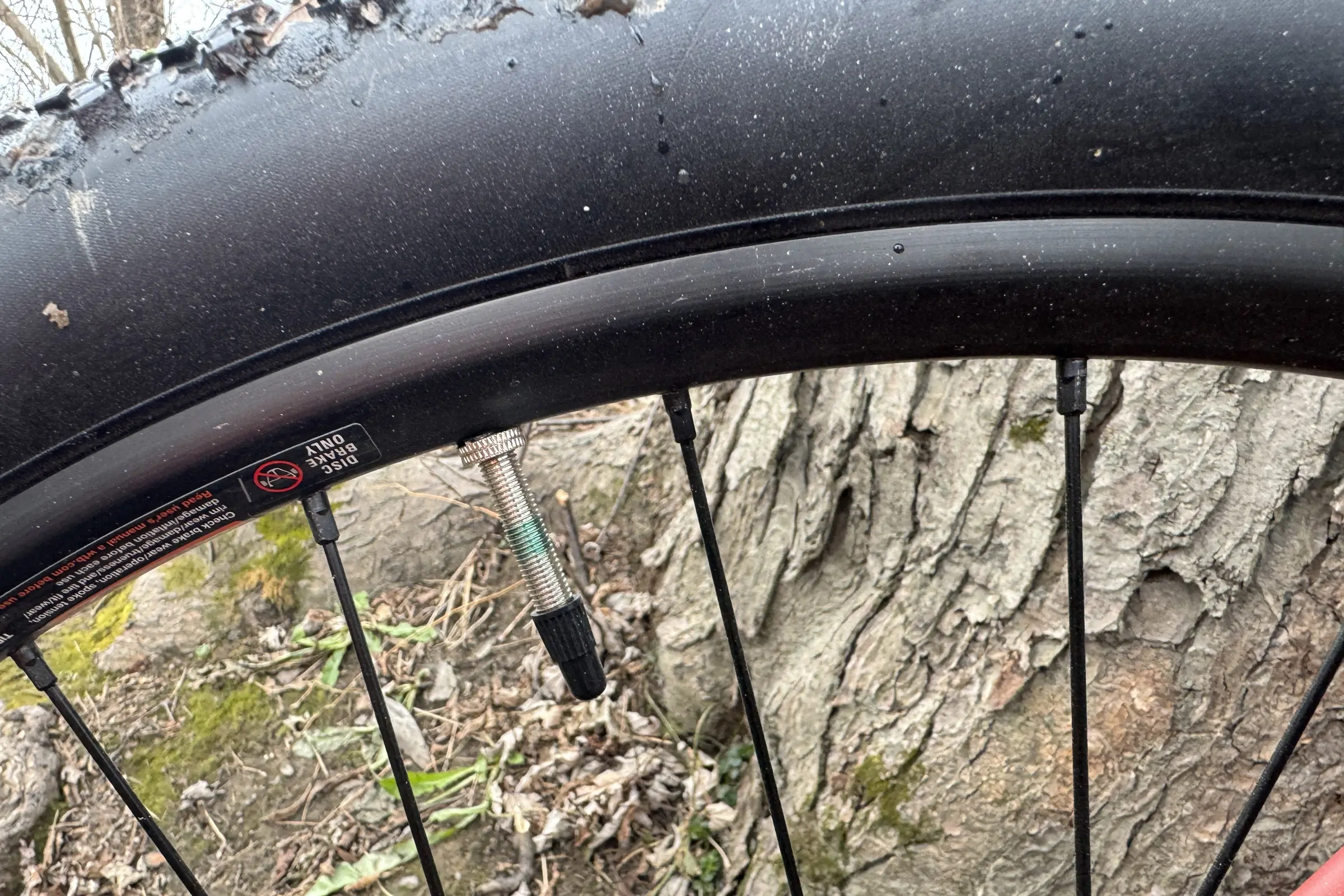



The 650x47c tires were extremely cushy but were also fast rolling.
The Kona Rove is a distinctive-looking bike. The matte bloodstone paint job was eye-catching. It reminded me of desert dirt.
Finally, the price of $1599 can’t be beat.
What Wasn’t So Great on the Kona Rove
Some riders won’t be fans of the nine-speed drivetrain. With gravel groups delivering up to 13 speeds, nine speeds felt like a throwback. But out riding, thanks to the dual front chainrings, the bike had enough gearing to tackle all the terrain I encountered.
My biggest complaint about this bike was the handlebar. Kona did a great job of outfitting the Rove with gravel-ready parts, except for the handlebar, which is Kona’s standard Kona Road bar. It doesn’t have the flare common among gravel bars. A flared bar enhances a gravel bike’s stability when on the drops and allows more hand positions. The Kona Road bar felt short in the drops. If I owned this bike, I’d swap the bars immediately.
The bike comes with tubes, and I would upgrade to tubeless. For Vermont riding, I’d also swap the tires. The Maxxis Rambler EXO 650x47c stock tires were great on pavement and hardpacked dirt, but they slid in mud or loose conditions. I’d swap to a 650x45c Pirelli Cinturato Adventure tire. If I kept this bike, I’d also shave rotating weight by upgrading to lighter rims.
Kona opted for externally routed cables on the Rove. It’s not as clean a look as internal cables, but the cables are easy to access for maintenance.
Kona Rove Gravel Bike: Conclusion
The Kona Rove is not a race bike, though I’d ride it for any gravel event on it. It’s not a touring bike, though I’d load it up and take it anywhere at any time. And I wouldn’t call it a commuter, though I pedaled it to plenty of meetings and to run errands. The bike is designed for all types of riding — commuting, touring, exploring, and just putting around. It wasn’t super quick to accelerate, but it just rolled fine once it was to speed.
The Kona Rove was capable right off the shelf, but it can be so much better with some minor tweaks. It’s a great first bike, quiver bike, bike for a teen, and bike for new adventurers. The Rove will make you smile as you ride off into the sunset or disappear in the morning fog for an incredibly affordable price.
